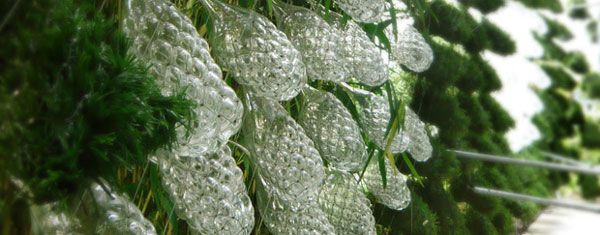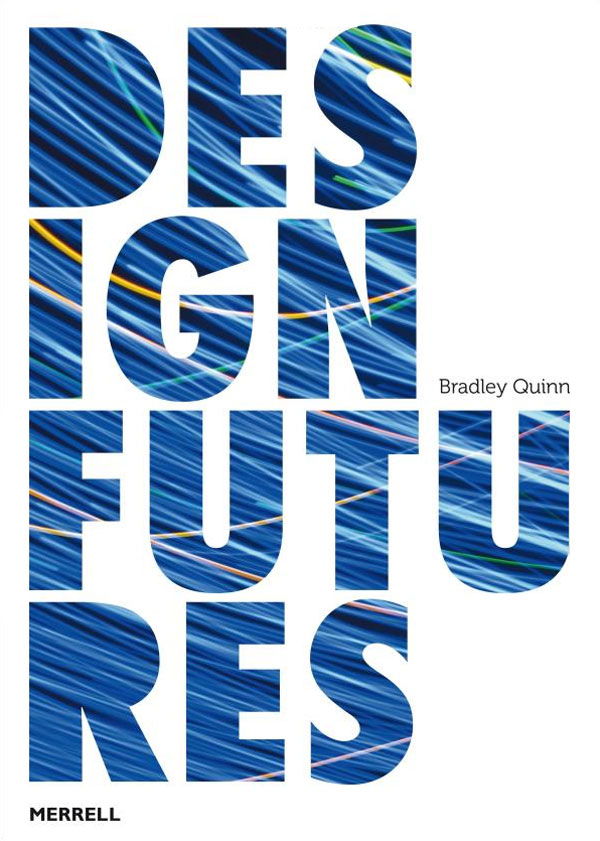Design Futures by Bradley Quinn
Article by Martin Gibson – @embody3d @martingibson – 28.03.2011
Design Futures by Bradley Quinn and published by Merrell advances the reader into the land of the unknown. The land of the future of design, a land that has the potential to unlock great monetary reward for those who persevere and presents missed opportunities for those stagnant and resistant to change. As like any business, a designer that fails to evolve and forecast is one which will eventually fail. As Quinn puts it:
“Designers seem to move between two worlds, creating in the now yet anticipating the future markets in which their products will sell.”
But what promises does Design Futures make? And how accurate and inline are these promises?
Firstly it must be stated that this book is heavily geared towards architects and interior designers, there are aspects dedicated specifically to product design however. Throughout the book the author remains pretty indiscriminate when it comes to design disciplines and keeps a broad approach making many of the lessons and influences very much applicable to industrial designers. When it comes to forecasting future technologies and trends, Design Futures plays it extremely safe; don’t expect any sci-fi of fantasy ideas.
“The purpose of this book is not to attempt to predict the future, but to outline the key factors that have the potential to shape the design and architecture of tomorrow.”
You might be asking, how far in the future is Design Futures talking about? It actually never mentions anything specifically on this, but one could gather that it is looking forward into 2025-2075. Design Futures upholds an evidence based approach and bases many ideas and concepts from technologies and projects that are in their preliminary stages today, but manages to do this without hypothesising specifically how these products may transpire. I guess this is your job after all?
The book is split up into the following chapters which I will go into a tiny bit more detail later on:
- Urban Utopias
- Interactive Interiors
- Mega Materials
- Dynamic Design
- Hyper-surfaces, and
- Future Frontiers
Within these chapters there is a fairly lengthy outline about the trend/concept or technology with accompanied photos followed by some really terrific interviews with designers and practitioners that include:
- Mathias Bengtsson
- Winka Dubbeldam
- Freedom of Creation
- Jane Harris
- Toyo Ito
- Suzanne Lee
- Mathieu Lehanneur
- Daniel Libeskind
- Karim Rashid
- David Shah
- Helen Storey
- Moritz Waldemeyer
- Tokujin Yoshioka, and
- Li Edelkoort
Urban Utopias
Urban Utopias takes an interesting look at the future of building externals. How the shell and structures of buildings can best serve our needs. Quinn talks about how buildings and their external environments will be tightly fused together in the future. A future where buildings exploit the natural environment and are reactive, almost living creatures that respond to the seasons and weather patterns to make our heating, cooling and health better controlled. Some interesting concepts like ‘hygroscopes’ (i.e. floating metropolises) are explored (somewhat related to the man-made islands of Dubai but more mechanical). Not to mention massive biospheres that can eradicate dust, radiation and chemicals harmful to humans. I found it ironic that perhaps our future buildings will be going back to the natural environment, rather than going to a really dirty, dark and industrial kind of future often explored in sci-fi movies.
Interactive Interiors
Quinn believes interior landscapes will follow a similar fate as building exteriors by being more intelligent and responsive. Rooms that know where you are located to save energy, rooms that will know how you’re feeling, and rooms that will give you directions and help where necessary. Quinn makes some really great mega trend observations here, by not just mentioning what will influence the future, but more importantly why this will happen. An interesting point I picked up was how homes are going to gain the efficiencies of corporate buildings, whilst stadiums are going to gain the amenities and traits of the home.
Mega Materials
In this section recent scientific discoveries in material science are used to forecast new use cases for materials and their potential applications. Use cases that could include aiding people with disabilities, making sports equipment more competitive and making buildings and structures stronger and lighter. Much of this section is based on current research of nanotechnologies, carbon extraction and exploitation, and strong molecular structures. Quinn sees a future where these expensive and niche materials now will be disseminated to the masses and designers will discover exciting new contexts and scenarios where these materials can be utilised. This was another interesting read with each material having its own description box, yet it still gave a big picture on all the material innovations occurring concurrently.
Dynamic Design
The dynamic design section focuses on user ergonomics and user interfaces. Objects that can be empathetic to our needs and how new relationships will be forged between humans and objects where we are symbiotic to one another rather than being a relationship based on need and exploitation. Dynamic Design is probably the most relevant to the working industrial designer as it focuses on interfaces of consumer devices and looks at the ergonomics of furniture and interiors.
Hyper-surfaces
The chapter on hyper-surfaces is definitely Design Futures most abstract and unfortunately weakest part of the book. From the get go it’s difficult to piece together what on earth is going on in hyper-surfaces and how it relates and differs from the previous chapters. The chapter attempts to talk about surfaces, like screens and touch interfaces but it seems to divert into all these tangents making the whole chapter really incoherent. Structurally it wants to amalgamate the previous chapters on Dynamic Design, Mega Materials, Urban utopias and Interactive Interiors but Quinn tries to warrant this its own unique section when it rather should have been assimilated into the existing chapters in a clever way. Despite this the actual content is extremely interesting, touching on areas of research such as virtual worlds and invisibility, but it needs some redefining.
Future Frontiers
Future Frontiers acts almost as a conclusion to all the previous chapters linking them all together by mentioning the key mega trends that will affect the future design industries. Quinn makes some good insights here linking the present with the future:
“The future of design rests on the objects we live with now, and many of the products, structures and environments surrounding us today are shaping things to come.”
The interviews in Design Futures are the strength of the book as they tend to be more pertinent and direct than the chapter outlines which are at times more free-flowing in their structure. Although the main paragraphs are relatively long, they often lack depth about hypothesising which specific technologies/manufacturing methodologies will power these ideas. The book never aims to achieve this endeavour though so Design Futures is best suited to a creative-driven mind rather than a mathematical/engineering mind. Despite not being specific, a skilled practitioner could be really empowered with the knowledge outlined in Design Futures. For students, Design Futures becomes a really exciting foundation of where to study and where to invest ones time as the book picks up cleverly these mega-trends, those subtleties that we experience blindly in our current world.
It would also be nice if Design Futures concentrated a little more on the why rather than the what. For example, if our homes are going to see the efficiencies of business offices, why not go into why this will occur. Is it because existing technology can’t meet this need? Is it because we are going to work harder in the future? Is it because of energy limitations? Asking why these events will occur and getting into the more psychological and social reasons behind these changes could suddenly open up a whole new dimension and get to the real drivers of these design challenges. The book never bypasses some of these social/environmental factors like the global financial crisis and global warming, but even more of this content could have really excelled the title.
The photographs work fantastically alongside the main paragraphs and really help illustrate the designs and technologies around today that are in their infancy that mimic these future concepts. These photos make the concepts thrown around seem more believable, and for designers it makes the concepts seem more achievable to produce and pursue. It really is a tremendous achievement to document and collate all these photos, they are such rarities. Some of the designs appear to be not from this world at all and I was truly captivated and inspired by them.
Many of the topics aren’t too outlandish and many creative professionals today would probably be keenly aware of many of the topics brought up in Design Futures. But the great thing about the book is that it aggregates all these snippets of ideas and broadcasts them to designers who might be stuck in their own industry or workplace bubble. Design Futures is an exhilarating ride into the future and beyond and is a subject matter than many authors would be too scared to touch.
[rating:4]









